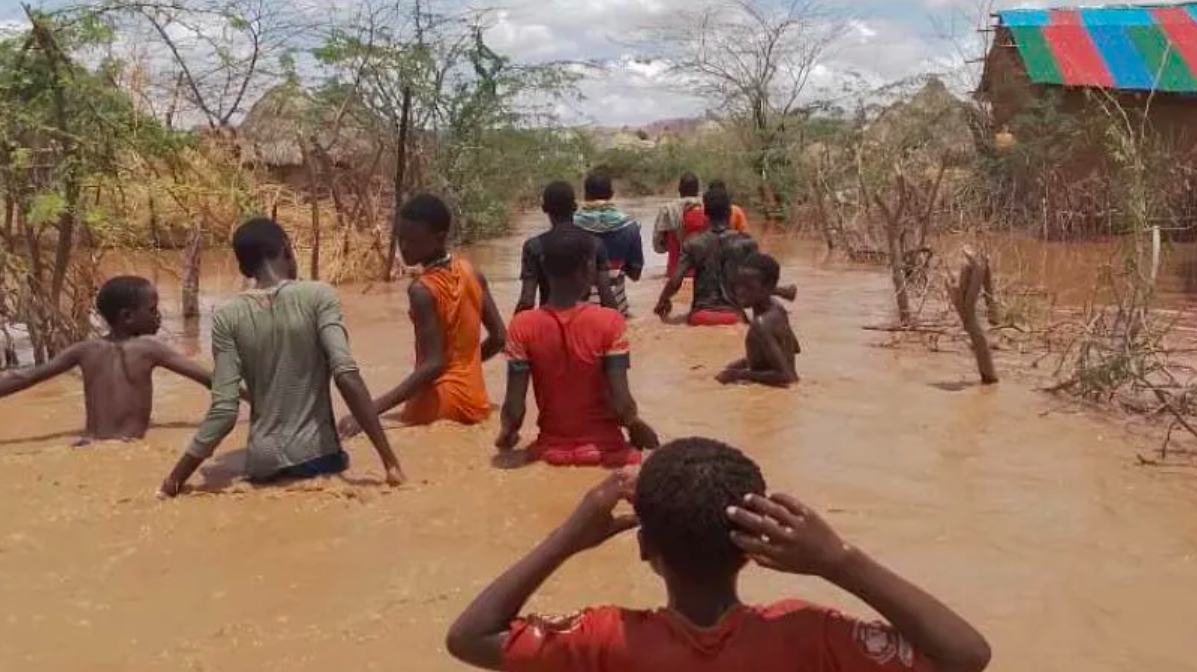
Horn of Africa: Flash flooding destroys homes, livestock for families facing the world's worst hunger crisis

Over the past three weeks, flash floods have killed at least 50 people, forced more than 30,000 families from their homes, and wiped out at least 10,000 livestock and 21,000 hectares of crops across both countries.
These extreme weather events show the vulnerability of the Horn of Africa to the climate emergency, and how climate impacts and the hunger crisis are inextricably linked, Save the Children said.
Following three years of drought, some 25 million people are going hungry across Somalia and Ethiopia[i], with more than 2.5 million children experiencing malnutrition[ii], as the world faces its worst hunger crisis this century. About 345 million people globally are projected to be food insecure this year – more than double the number in 2020 – according to the UN.
The prolonged drought has ruined the soil, making it more difficult to absorb the rains to be able to grow crops, putting a much-needed respite from food and water scarcity out of reach.
Without enough nutritious food to eat or the ability to absorb the right nutrients due to illness, children under five are at high risk of acute malnutrition that can lead to death - or if a child survives, can cause stunting, and impede mental and physical development longer term.
Save the Children’s Regional Spokesperson for East and Southern Africa, Malama Mwila, said:
"This is tragedy upon tragedy. Children and families in these parts of Somalia and Ethiopia have been waiting for rains for nearly three years – and when they finally come, they have washed away what little crops and livestock are remaining.
"Yet again we see the link between hunger and the climate crisis, and that children and communities who are most impacted by poverty and inequality are bearing the brunt of both.
"Not only do we need to see sustained injection of international funding to address the hunger crisis – we need investment in long-term resilience for climate-vulnerable communities like these. We also need tangible progress on the agreement made at COP27 to establish a loss and damage fund, with funds clearly ear-marked for climate disasters like these droughts and flash floods, and for longer term development after the initial recovery phase.”
The United Nations last year warned of a looming famine in Somalia which is facing its worst drought in about four decades after five failed rainy seasons combined with rising food prices and ongoing conflict, fuelling concerns of a repeat of 2011 when about 260,000 people died.
Save the Children has been working in Somalia and Somaliland since 1951 and has programmes supporting children’s healthcare, education and food needs. In 2022 Save the Children provided humanitarian aid to about 4.3 million people - including about 2.5 million children.
Save the Children has been operating in Ethiopia for over 60 years with its work focused on health and nutrition as well as life-saving water and sanitation assistance, protection services, education support, and cash and in-kind distributions. In 2022, Save the Children reached about 7.6 million people including 5.1 million children.
Leave a comment
- Popular
- Rated
- Commented
04/11/2021 - 11:05:02
12/03/2023 - 22:58:08
22/01/2023 - 11:24:06
13/12/2015 - 09:27:08
01/03/2021 - 09:00:37
Opinions
17/04/2024 - 22:46:39
08/03/2024 - 02:04:01
Politics
22/04/2024 - 15:18:30
17/04/2024 - 22:46:39
Terror Watch
28/04/2024 - 02:39:40
28/04/2024 - 01:34:19
Press Releases
18/04/2024 - 21:29:03
13/04/2024 - 10:40:06
 0
0 


































Horn of Africa: Flash flooding destroys homes, livestock for families facing the world's worst hunger crisis
MOGADISHU, Somalia - – Extreme rains and flash flooding have destroyed homes and livestock in rural communities in Ethiopia and Somalia struggling to recover after almost three years of drought, dashing hopes of a reprieve from east Africa'